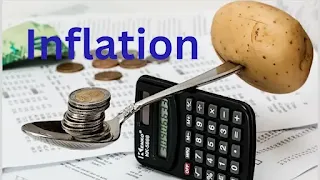What causes demand pull inflation in economics
Demand-pull inflation is a crucial economic concept that involves the interplay of supply and demand, affecting an economy's health and influencing policy decisions.
Introduction
Inflation, the rise in the general price level of goods and services over time, is a complex economic phenomenon. At the heart of inflation lies demand-pull inflation, a situation where the overall demand for goods and services outpaces their supply, leading to a surge in prices. Understanding the dynamics of demand-pull inflation is crucial for comprehending the nuances of economic fluctuations.
Understanding Demand-Pull Inflation
Demand-pull inflation occurs when the aggregate demand for goods and services surpasses the economy's ability to produce them. This imbalance tips the scales, causing a rise in prices. In simpler terms, it's a scenario where "too much money chases too few goods."
Historically, demand-pull inflation can be traced back to times of economic booms, where consumer confidence is high, leading to increased spending.
Key Contributors to Demand-Pull Inflation
Several factors contribute to the emergence of demand-pull inflation. One primary driver is the increase in consumer spending. As individuals feel more financially secure, they tend to spend more, creating a surge in demand. Additionally, government expenditure and business investments play significant roles in fueling inflationary pressures.
External factors, such as changes in export and import dynamics, can also influence demand-pull inflation. A rise in exports may contribute positively, while an increase in imports could exacerbate the situation.
Role of Monetary Policy
Central banks play a crucial role in managing inflation through monetary policy. By adjusting interest rates, central banks influence the cost of borrowing and spending. Higher interest rates can curb excessive spending, acting as a tool to mitigate demand-pull inflation.
Impact on Prices
The consequences of demand-pull inflation are far-reaching. Prices of consumer goods, services, and housing are directly affected. Everyday items become more expensive, impacting the purchasing power of consumers.
Demand-Pull Inflation vs. Other Types of Inflation
Distinguishing demand-pull inflation from other types, such as cost-push inflation and built-in inflation, is essential for policymakers. Each type has unique characteristics, requiring tailored strategies for effective management.
Measuring Demand-Pull Inflation
Accurate measurement is crucial for addressing demand-pull inflation. Economists use various price indices and economic indicators to gauge the severity of inflationary pressures and make informed policy decisions.
Historical Cases of Demand-Pull Inflation
Examining historical cases, like the oil crisis of the 1970s or recent global economic events, provides insights into how demand-pull inflation can manifest and its lasting impact on economies.
Mitigating Strategies
Governments and central banks employ various strategies to mitigate the impact of demand-pull inflation. These include fiscal measures, adjusting interest rates, and other forms of government intervention.
Challenges Posed by Demand-Pull Inflation
While addressing inflation is crucial, it has challenges. Concerns about unemployment and the potential exacerbation of social and economic inequality are significant considerations in the decision-making process.
Global Perspectives
Understanding how demand-pull inflation affects different economies is essential for a comprehensive approach to economic management. The global interconnectedness of economies means that actions in one region can have ripple effects worldwide.
Forecasting and Prevention
Proactive measures, including economic forecasting and preventive strategies, are vital to managing demand-pull inflation effectively. Governments and policymakers must anticipate economic shifts and take timely action.
The Role of Technology
In the modern era, technology plays a pivotal role in shaping economic dynamics. Innovations in production and consumption can either exacerbate or alleviate demand-pull inflation, making it a double-edged sword in economic management.
Consumer Behavior in Inflationary Periods
Understanding how consumers adapt to inflationary periods and the long-term impacts on spending habits is crucial for businesses and policymakers alike. Adapting strategies to changing consumer behavior can help navigate economic uncertainties.
Conclusion
In conclusion, demand-pull inflation is a dynamic force in economics, shaped by various factors. Its impact on prices, consumer behavior, and global economies underscores the need for nuanced strategies in economic management. As we navigate the complexities of economic dynamics, it becomes evident that adaptability and foresight are key to maintaining economic stability.
FAQs
1. Q: How does demand-pull inflation differ from cost-push inflation?
- A: Demand-pull inflation is driven by increased demand, while cost-push inflation results from rising production costs.
2. Q: What role does the government play in mitigating demand-pull inflation?
- A: Governments can intervene through fiscal measures and policies to control excessive spending.
3. Q: How do central banks influence demand-pull inflation through monetary policy?
- A: Central banks adjust interest rates to influence borrowing and spending, acting as a tool to manage inflation.
4. Q: Can technology contribute to preventing demand-pull inflation?
- A: Technology can both exacerbate and alleviate inflation, making its role complex in economic management.
5. Q: How do consumers adapt to inflationary periods, and what are the long-term impacts?
- A: Consumers may alter spending habits, and the long-term impacts include changes in purchasing behavior and financial planning.



